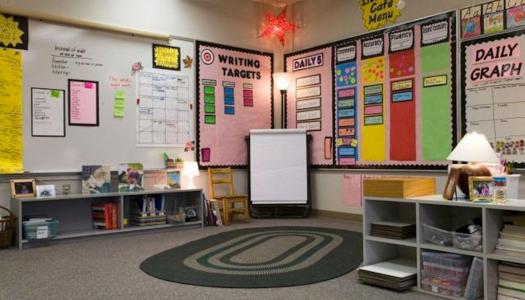Leadership Support–Know What to Look For, Part 3 of 3
Join Our Community
Access this resource now. Get up to three resources every month for free.
Choose from thousands of articles, lessons, guides, videos, and printables.
 The success of Daily 5 and CAFE is contagious. Fortunately for children, teaching is a collaborative profession and when teachers find something that works, they want to share. Because of this, the secret is out and many schools are implementing Daily 5 and CAFE as a school-wide initiative. As with anything that requires change, some people jump right in, some dabble in pieces, and others simply struggle. Administrators wanting to support their teachers often want to know what to look for when they go in the classroom. What indicates that Daily 5 and CAFE are being used? Here are a few ideas.
The success of Daily 5 and CAFE is contagious. Fortunately for children, teaching is a collaborative profession and when teachers find something that works, they want to share. Because of this, the secret is out and many schools are implementing Daily 5 and CAFE as a school-wide initiative. As with anything that requires change, some people jump right in, some dabble in pieces, and others simply struggle. Administrators wanting to support their teachers often want to know what to look for when they go in the classroom. What indicates that Daily 5 and CAFE are being used? Here are a few ideas.
What to look for in a Daily 5 classroom:
- I-charts—There should be an I-chart for each of the Daily 5 (Read to Self, Read to Someone, Work on Writing, Word Work, and Listen to Reading). These should have been created with the students and remain posted for easy reference.
- Book boxes—Each child should have some box/bag/container to hold good-fit books. Students in upper grades occasionally keep their things in their desks.
- Brief focus lessons—A Daily 5 classroom will have a blend of whole group, small group, and one-on-one instruction. Whole group lessons should be brief and focused. If you are stopping in a Daily 5 classroom at different times during the literacy block, you should see all of these components taking place.
- Stamina graph—Daily 5 students gradually build stamina to be independent readers and writers. You may see a stamina graph recording their current stamina level measured in minutes. If a graph is not posted, the children should be able to tell you at any point in time, what their collective stamina is.
- Student behavior—Daily 5 students have worked to build stamina and be independent. If you walk in a classroom during Daily 5, students should be engaged in the tasks they are working on. They will be in one spot, working the whole time. They will allow the teacher to work with other students without interruption. In fact, many children will not even acknowledge your presence in the classroom because they will be so engaged in their literacy tasks.
What to look for in a CAFE classroom:
- CAFE Menu—You will see a board that has the letters C A F E as a heading. This is the CAFE menu that holds strategies students use to read and comprehend text. Depending on the grade level and especially if it is early in the year, you will not see many strategies posted. The menu is created throughout the year as strategies are introduced, thus anchoring students learning to the menu.
- Student ownership—The strategies on the CAFE board are mostly written by students, as they will become the "experts" on these strategies. You will also see student names posted somewhere on the board. This indicates a literacy goal they are working to master.
- Individualized instruction—Teachers using CAFE will have a deep understanding of where each child is in the reading process. They will have a conferring notebook (either in a binder or an electronic version) that has specific information on each child (assessments, reading level, goals, strategy groups, etc.). They should have a calendar that includes appointments of strategy groups and individual student conferences.
- Academic language—Students are taught many literacy strategies (comprehension, accuracy, fluency, and vocabulary). They are taught these strategies using true academic language. This academic language provides consistency to students as they move from grade to grade. Students in a CAFE class will be able to tell you what strategy they are working on and what it means.
- Academic success—Teachers using CAFE in conjunction with Daily 5 will see academic gains in his/her students. Daily 5 provides the literacy structure for students to work independently on research based literacy tasks, allowing time for the teacher to work with students in small groups and individually. When teachers use this time effectively, they are able to assess student needs and instruct students in the range necessary to move them to the next level.








